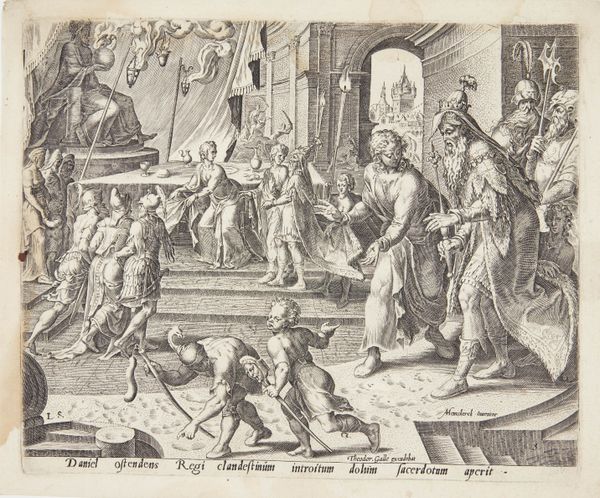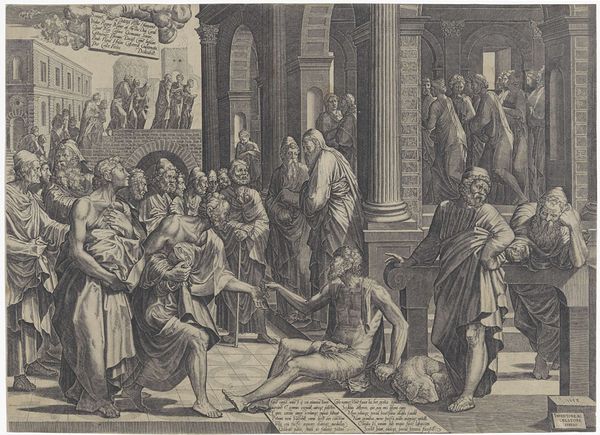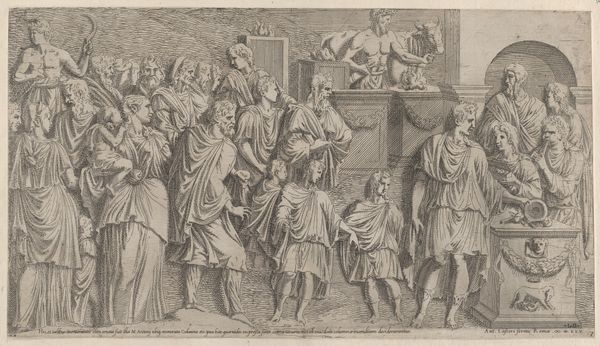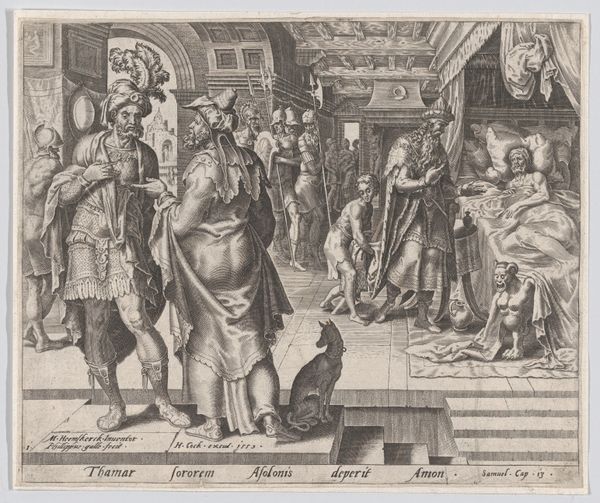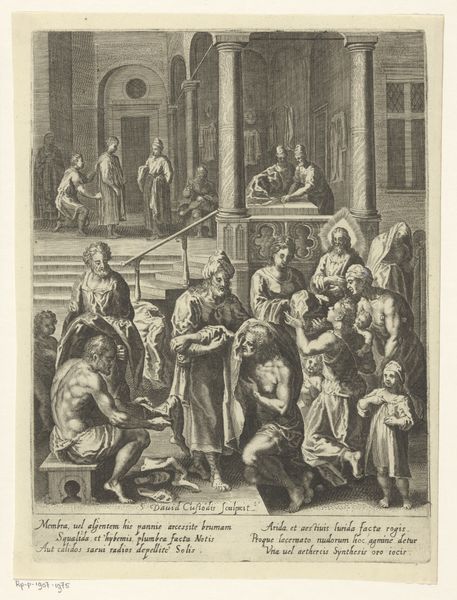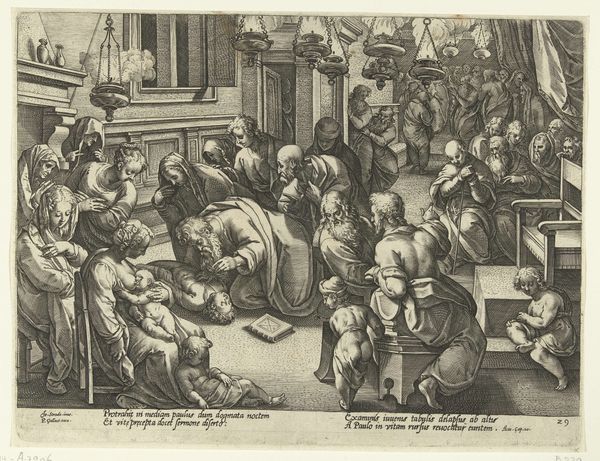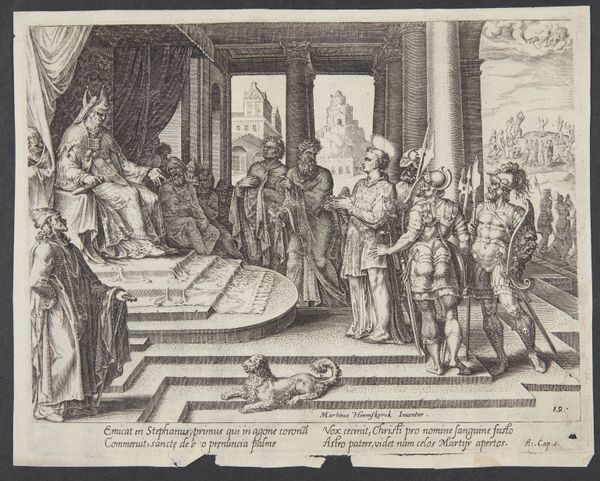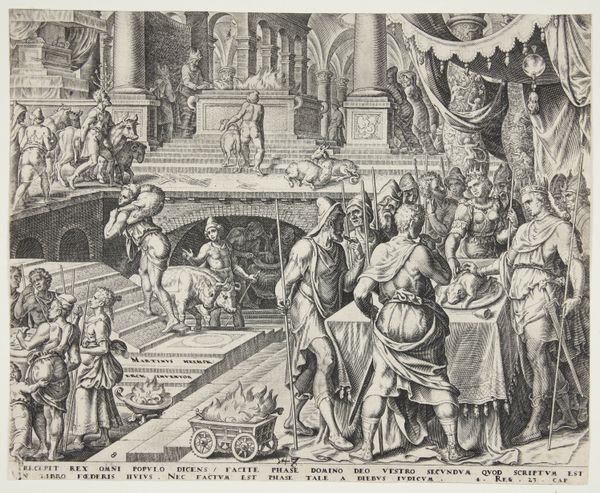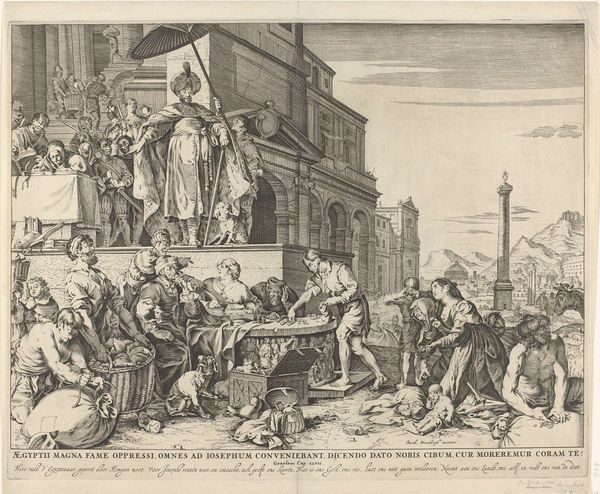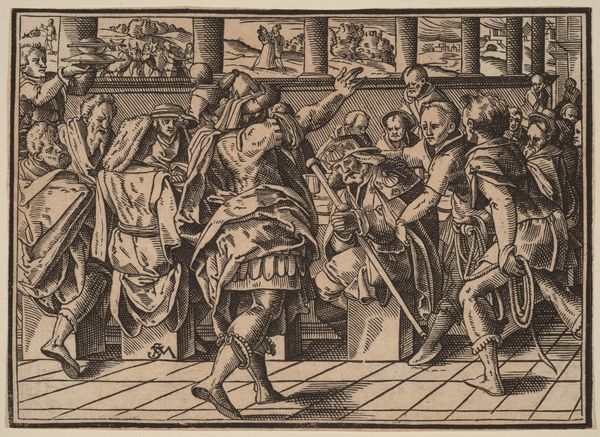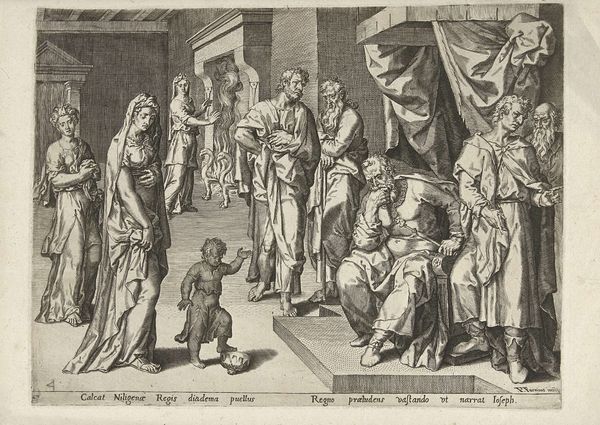
print, ink, engraving
#
narrative-art
# print
#
figuration
#
ink
#
genre-painting
#
northern-renaissance
#
engraving
Dimensions: plate: 11 x 14.9 cm (4 5/16 x 5 7/8 in.) sheet: 20 x 25.2 cm (7 7/8 x 9 15/16 in.)
Copyright: National Gallery of Art: CC0 1.0
Editor: This is Conrad Meyer's "Quenching of the Thirsty," made with ink using an engraving technique. The overall mood seems quite somber. With such careful attention to the individual lines etched to make up the work, how do you even begin to interpret this print? Curator: Look at the material reality: an engraving implies a reproducible image, aimed at a wider, less elite audience than a unique painting. The choice of a genre scene depicting an act of charity, “quenching thirst,” would have resonated with that audience, reflecting contemporary social concerns about poverty and welfare. How does the medium itself, with its dependence on manual labor and production, speak to the content of the piece? Editor: I see what you mean. So, the print isn't just showing charity; its production is also related to the idea of labor and distribution. The fact that it's reproducible suggests a broader social message. Is the intended audience also of note? Curator: Exactly! Think about the material conditions of production and reception. The labor of the engraver, the printing process itself, and the intended consumption of the image by a particular social group all come together here. This allows the ideas to spread easily, which can then spark cultural significance. Why do you think the artist used such specific detailing? Editor: Perhaps to emphasize the realness and relatability of the scene? I hadn't thought about how the physical process of creating art, impacts the message as well as the audience! Curator: And conversely, how the perceived message can determine the labor process. Thinking about art in terms of labor, production, and consumption allows us to unpack some really interesting questions about value and meaning. Editor: That is such an unexpected but helpful point of view. Thanks! I learned to think beyond just the visual aspects. Curator: Precisely, and thinking materialistically, as we have today, pushes us to really challenge boundaries between art and other parts of daily life.
Comments
No comments
Be the first to comment and join the conversation on the ultimate creative platform.

